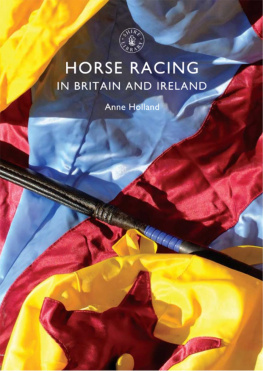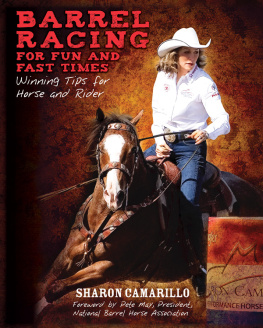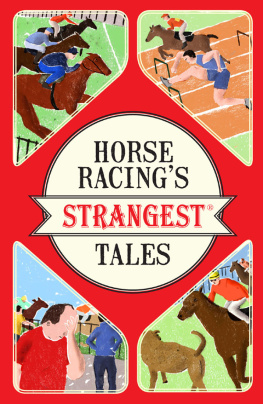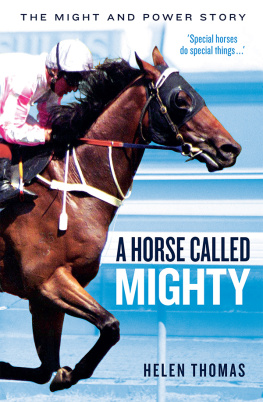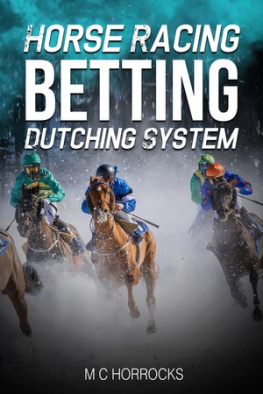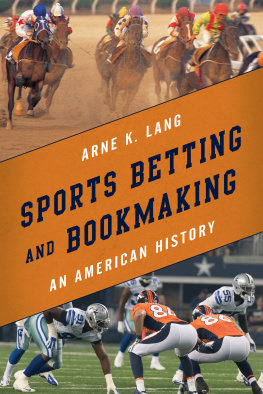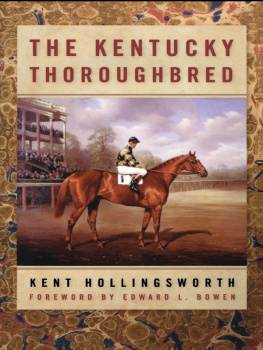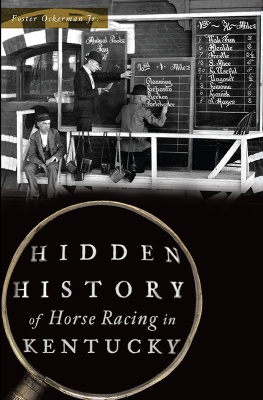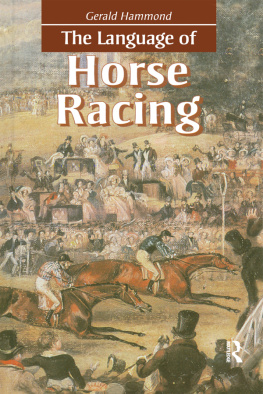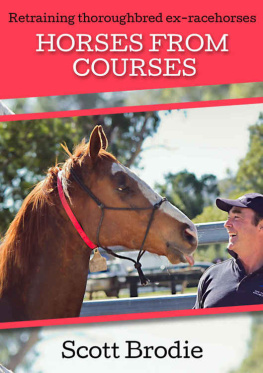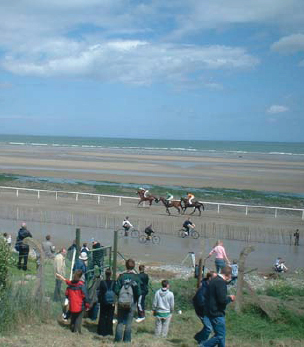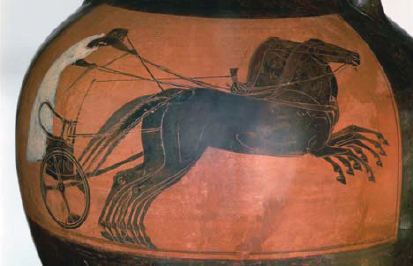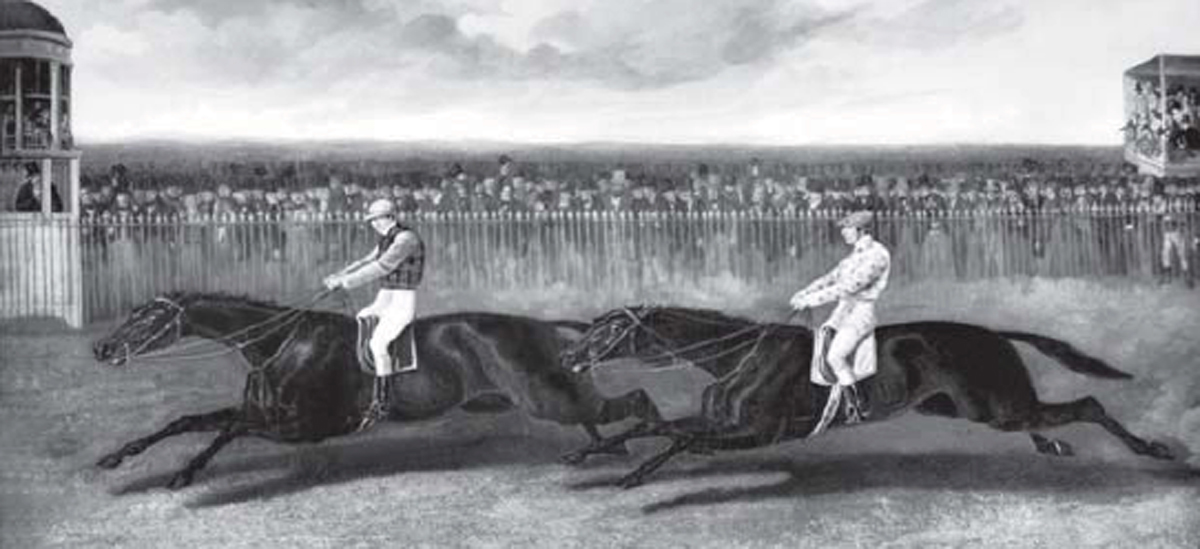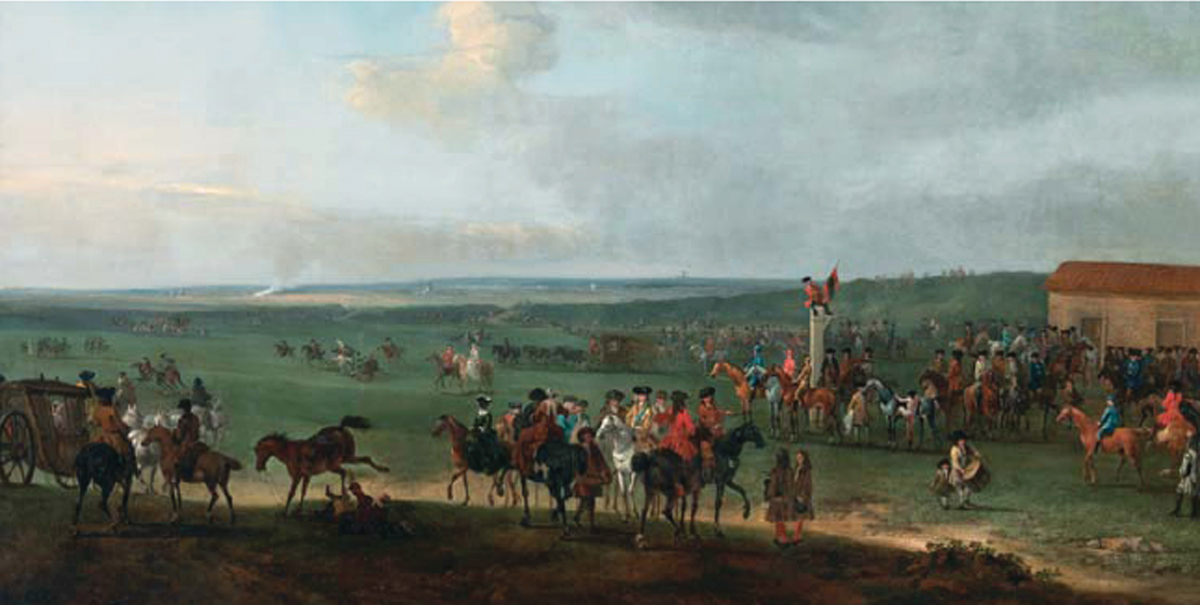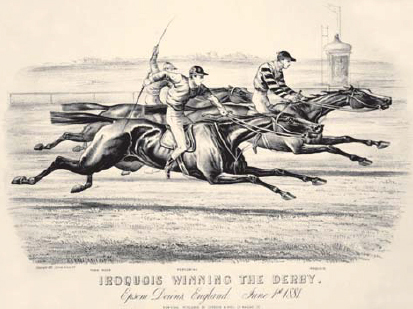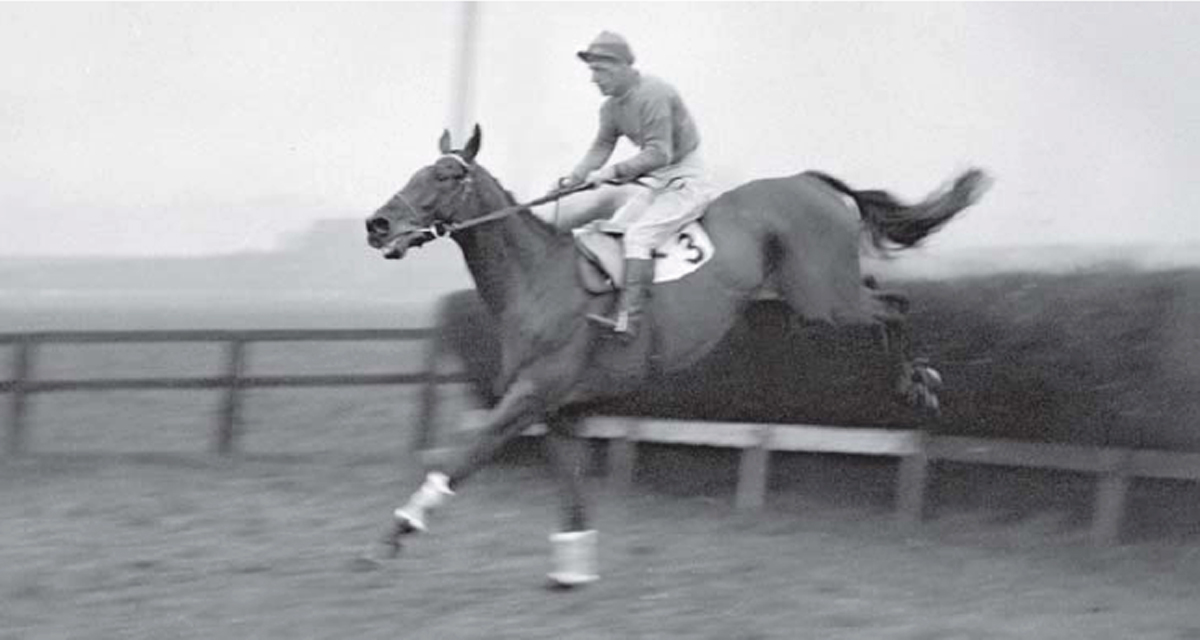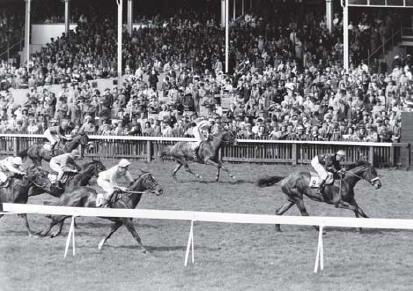HORSE RACING
IN BRITAIN AND IRELAND
Anne Holland
Laytown Races on Laytown beach, Co Meath, Ireland.
Steeplechasing: The Hurdle, by William Shayer, 1869.
CONTENTS
Aerial photograph of the ancient racecourse of Roman Caesarea.
FLAT RACING
O LYMPIA IN ANCIENT G REECE is said to be the sanctuary of Zeus; today there remain statues, busts and ruins, as well as an incredible aura. The hippodrome, for horse and chariot racing, is long gone, but is believed to have been situated alongside the athletics stadium, which still stands. The hippodrome is thought to have been some 1,552 metres long (six stades) by 64 metres wide. The horses ran in races ranging in length between three to twelve circuits, and horse races and chariot races were included in the Olympic Games from 776 BC until the Games were abolished in about AD 393. The sense of wonder pervades: is this where it all started this wonderful sport that we know as the Sport of Kings?
It was the Romans who brought horse racing to Britain, and to Yorkshire in particular, where the first recorded meeting was held at Netherby in about AD 210. Racing at that time was held in such high esteem that York citizens who wished to improve their social status used to give cash to meetings; the Greek Olympiads also relied to an extent on gifts of money, so sponsorship is far from new in the sport.
English kings have long played a part. King Athelstan (reigned 92739) received a present of running horses from France by a man called Hugh because he wanted to marry the kings sister, Ethelswitha. Henry II (reigned 115489) described races at Smoothfield (Smithfield) in which jockies, inspired with thoughts of applause and in the hope of victory, clap spurs to the willing horses, brandish their whips and cheer them with their cries.
Greek vase depicting a chariot race, c. 5th6th century BC. Muse Municipal Antoine Vivenel, Compigne, France.
Edward III (r. 132777) received two running horses from the King of Navarre, and, just before Edwards death, his grandson, soon to become Richard II, raced against the Earl of Arundel. It was a match race (with two competitors only) as racing was generally to remain for a few more centuries yet.
The first fully established English racecourse was founded on what is known as the Roodee, Chester, inside the city walls in 1540 during Henry VIIIs reign, and it remains one of the most attractive of courses. York established its permanent course on the Knavesmire, outside the city walls, not far from the York Tyburn gallows. Courses began to spring up all over the country and races took place at many fairs and markets.
Flying Dutchman winning from Voltigeur at York, 13 May 1851. He came from the Darley Arabian Sire line: King Fergus Branch. Flying Dutchman was a talented horse of the highest class. Run over two miles, this match was billed as the Match of the Century.
James I discovered that the heath around the new market near Exning was ideal for coursing and hawking. It was there on 8 March 1622 that, as an added diversion, Lord Salisbury and the Marquess of Buckingham matched their horses for 100, so founding Newmarket racecourse. During Jamess reign handicapping first came about the system of allocating different weights to be carried by horses according to past performances. The system was designed to give all horses an equal chance of winning so that, in theory, they should finish in line abreast. Charles I continued the racing there but it was Charles II who really turned Newmarket into racings headquarters.
In 1711 Queen Anne founded Ascot and put up a Queens Plate, having come across a suitable place on the heath while following the royal buckhounds in her chaise. George IV was a great patron of the turf and won the Derby at Epsom in 1788, when he was Prince of Wales. Queen Victoria did not go racing but she kept the fine Royal Stud at Hampton Court, and her son, later Edward VII, won eight Classics and a Grand National. George V won one Classic and his son, George VI, won four. Coming right up to the present day, Queen Elizabeth II has won four of the five Classics so far; only the Derby has eluded her, her Aureole finishing second in 1953 and Carlton House third in 2011.
The Round Course at Newmarket, Cambridgeshire, Preparing for the Kings Plate, by Peter Tillemans, c. 1725.
Iroquois, ridden by Fred Archer, winning the Derby at Epsom Downs, 1 June 1881.
Golden Miller, clearing one of the fences at the now defunct Derby, 21 January 1935.
The sport of kings it may be, but modern times have seen the birth of syndicates, where a number of people club together, spreading the cost and making owning racehorses financially possible and occasionally profitable.
The early races were mostly matches or with three runners usually owners wagering against each other, either riding themselves or paying someone more competent to do so, thus initiating the start of professional jockeys. By the time of Eclipse in the eighteenth century, races were mostly run in heats of up to four miles in distance, followed by a final, all on the same day. It is now established that horses may start racing on the flat from the age of two.
The first Classic to be founded was the St Leger in 1776, which introduced the concept of one race only, and which was over two miles long. Although a smattering of two-mile-plus races remain today the emphasis is increasingly on speed. The final race of the five Classics, the St Leger, no longer commands the prestige it once did, while one-mile-and-ten-furlong races vie with the more traditional mile-and-a-half races like the Derby for breeding purposes (buyers prefer speedier horses associated with shorter distances).
The 2,000 Guineas Stakes at Newmarket, 2 May 1934. Lord Glanelys unbeaten horse Colombo won from Eacton and the Aga Khans Badruddin.

